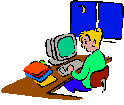Stanford Sleepiness Scale (modified)
You may already know at what times you tend to be the sharpest or most alert during your typical day. And certainly most of us have noticed that we tend to drag in the middle of the afternoon, even without a two martini lunch! This test will show you the answers in black and white.
Using the following descriptions as a guide, fill in the number or letter that best matches how you feel on a typical day at the times mentioned below:
1) Feeling energetic, alert, wide awake
2) Still functioning at high levels, but not peak; still able to concentrate
3) Feeling awake, but mellowing; responsive, but not fully alert
4) Becoming unable to focus or concentrate; more relaxed, less alert
5) Unable to concentrate; losing interest in being awake; slowing down
6) Feeling very drowsy, fighting sleep; really would rather be lying down
7) No longer fighting sleep, eyelids drooping; having dream-like thoughts
X) Just waking up or falling asleep
Y) Asleep


 Time of day
Time of day
 Sleepiness Rating (1-7, X, Y)
Sleepiness Rating (1-7, X, Y)
Add your answers, ignoring any X or Y answers. ____ (a)
____ (a)
Divide (a) by the # of 1-7 responses. 

 ____ (b)
____ (b)
Does your average sleepiness rating for the day, (b) from above, accurately describe how you feel a lot of the time? Were you right about the time when you are usually the most alert? Like your score on the Epworth Scale, these numbers are not diagnostic, just useful to know as part of the bigger picture.
Most of us peak twice a day at roughly the same time every day. For most people, those times tend to be at 9 am and 9 pm. Looking for sleepiness ratings of “1” in your answers above, when were your peak alertness times? Do you tend to peak twice a day?
There are also generally two times of daily sluggishness, but usually only night shift workers are aware of the early morning one. The average low times tend to be around 3 pm and 3 am. Other than at bedtime, when were you the most sluggish?
You can use the answers from this modified Stanford Sleepiness Scale to schedule your days so that you are capitalizing on your highs and avoiding scheduling important decisions, etc. during the lows. If you currently have more than two natural lows, you should be able to cut that back to just two, once you are sleeping better. As you continue to work your way through the steps to better sleep and make adjustments to your sleep habits and schedules, repeat this test from time to time to make sure that you continue to make the most of your natural highs and lows.



